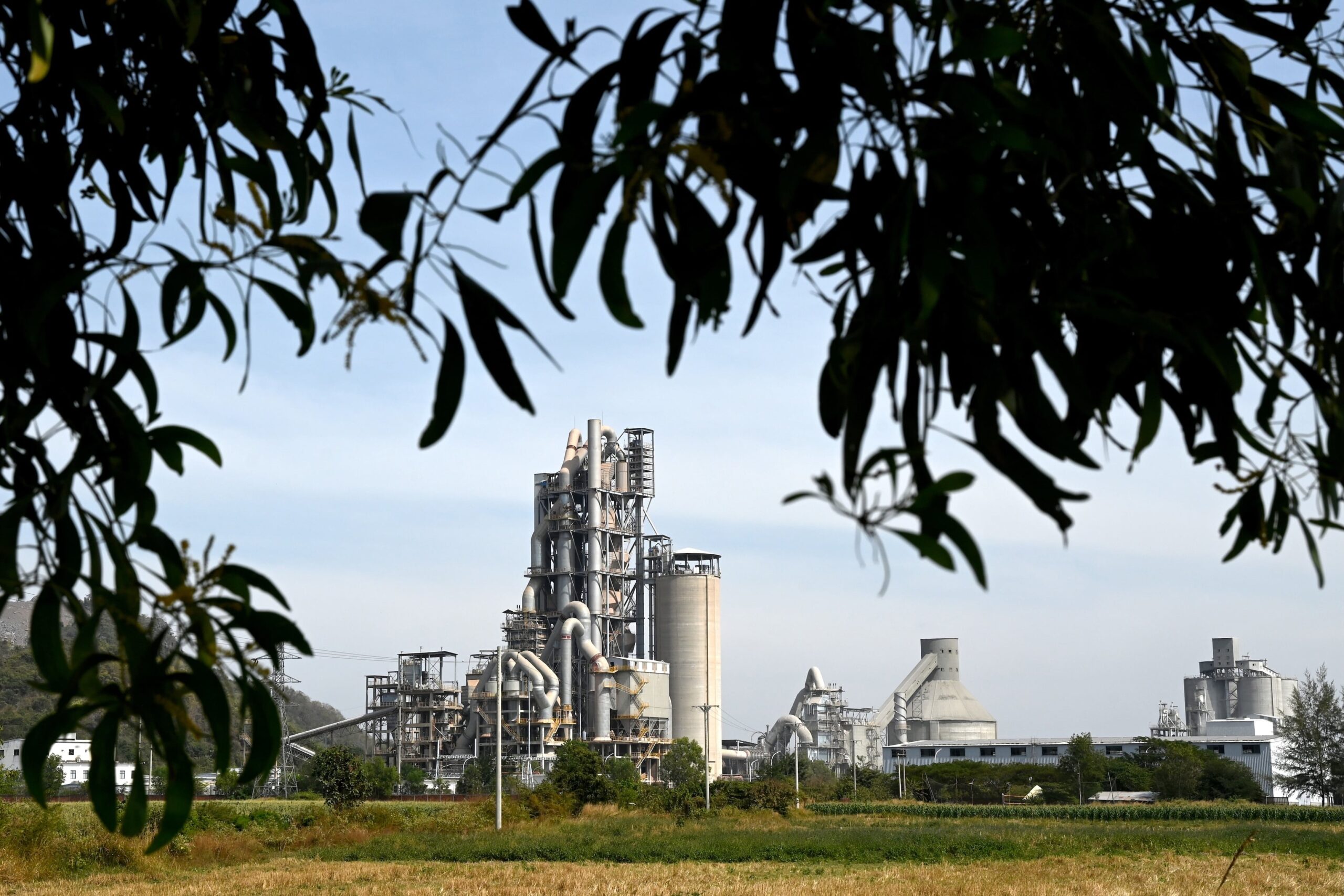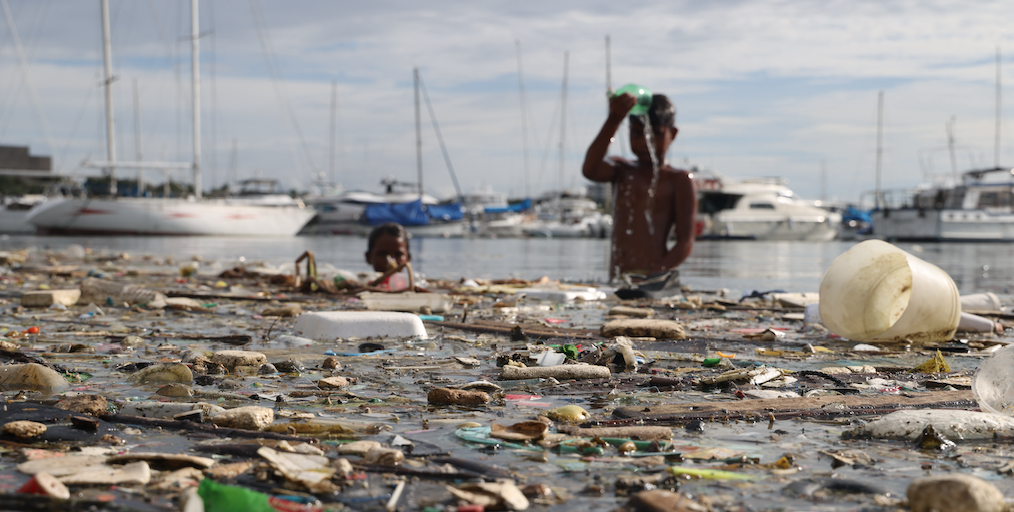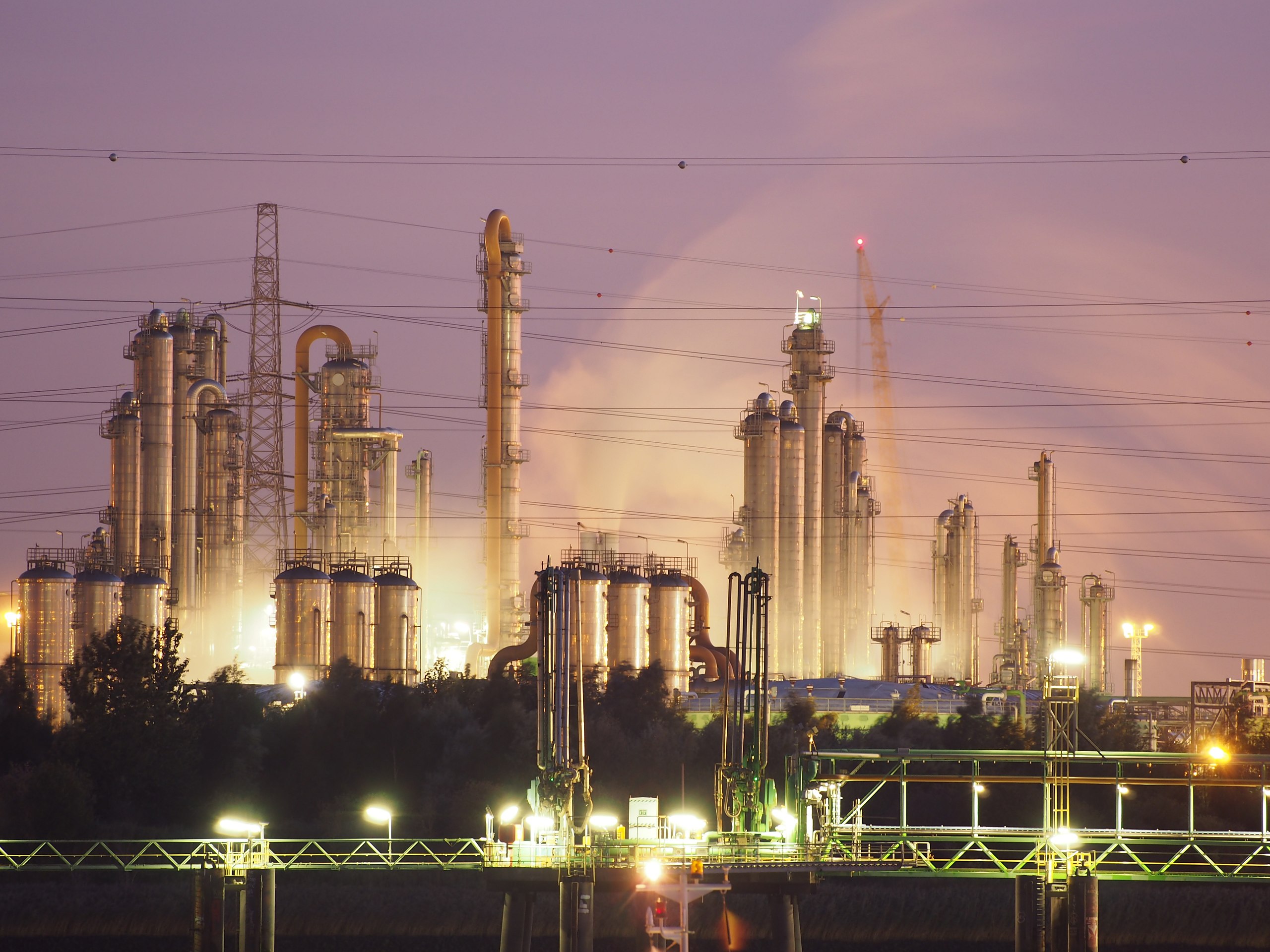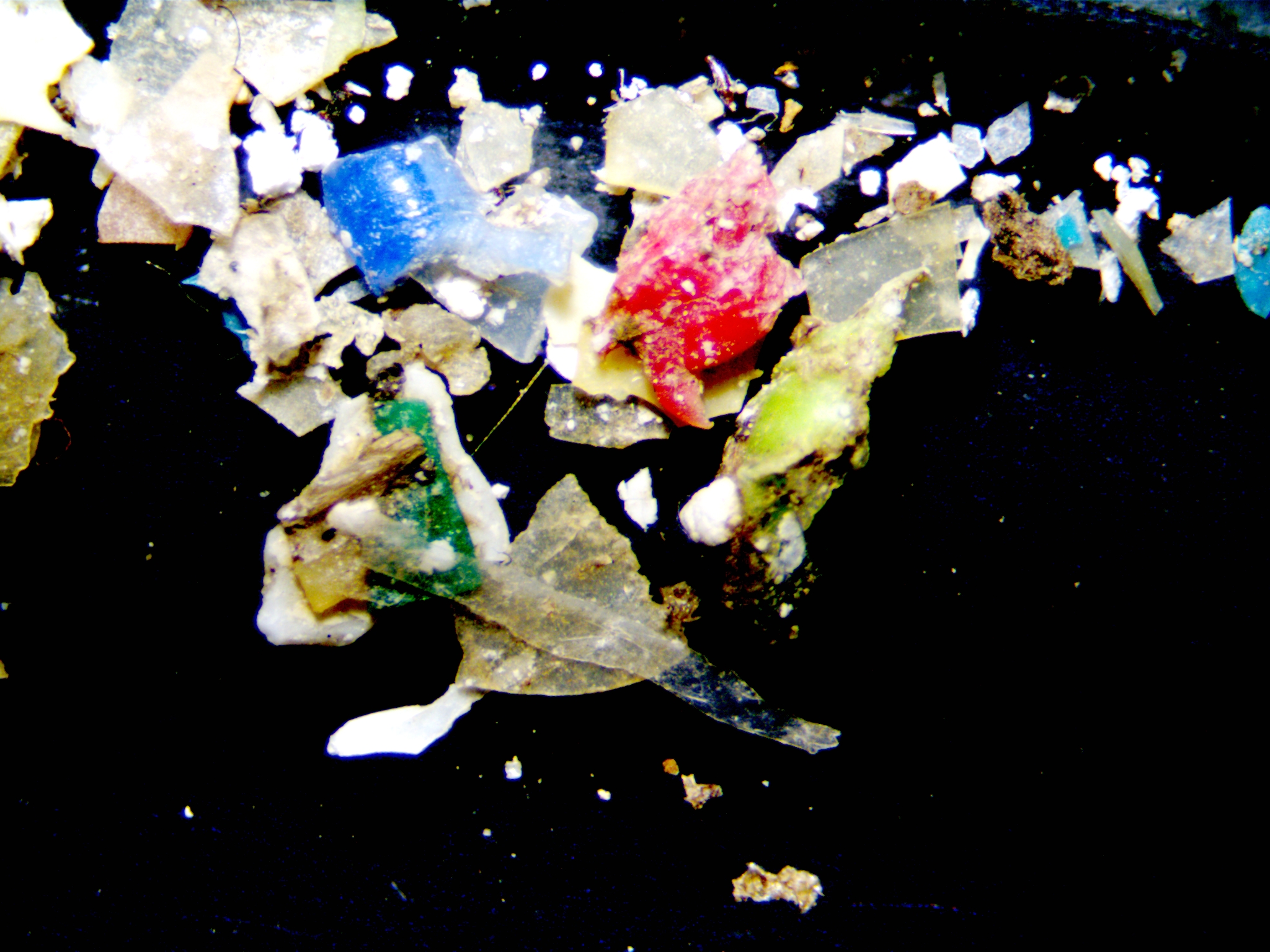One of the plastics industry’s favoured ways to cut waste puts the climate and people’s health at risk, without curbing production
Twice a day, sirens sound in the shadow of Touk Meas Mountain in Kampot province, Cambodia. A few minutes later, there is a loud boom and a plume of brown dust rises from the rocks.
Miners are blasting limestone into pieces that will be ground and heated to more than 1,000 degrees Celsius in a nearby kiln to make cement.
“We’re often coughing,” said Pheara, a 32-year-old mother of a six-year-old whose house abuts the perimeter wall of the cement plant. Like other locals, she describes developing respiratory problems since it opened in 2018.
Cement-making is a dirty business. As well as creating hazardous dust from quarrying, manufacturers emit greenhouse gases from their kilns, and the industry is thought to account for 8 per cent of carbon emissions worldwide. Yet the kiln next to Pheara’s house is supposedly at the heart of a global fight against pollution.
That’s because the cement plant, operated by Chip Mong Group, a company linked to Cambodia’s ruling family, is fueled by burning thousands of tonnes of waste plastic. The waste is collected in the neighbouring province of Preah Sihanouk and delivered in trucks by a company called Tontoton, which says the material would otherwise end up in the ocean.
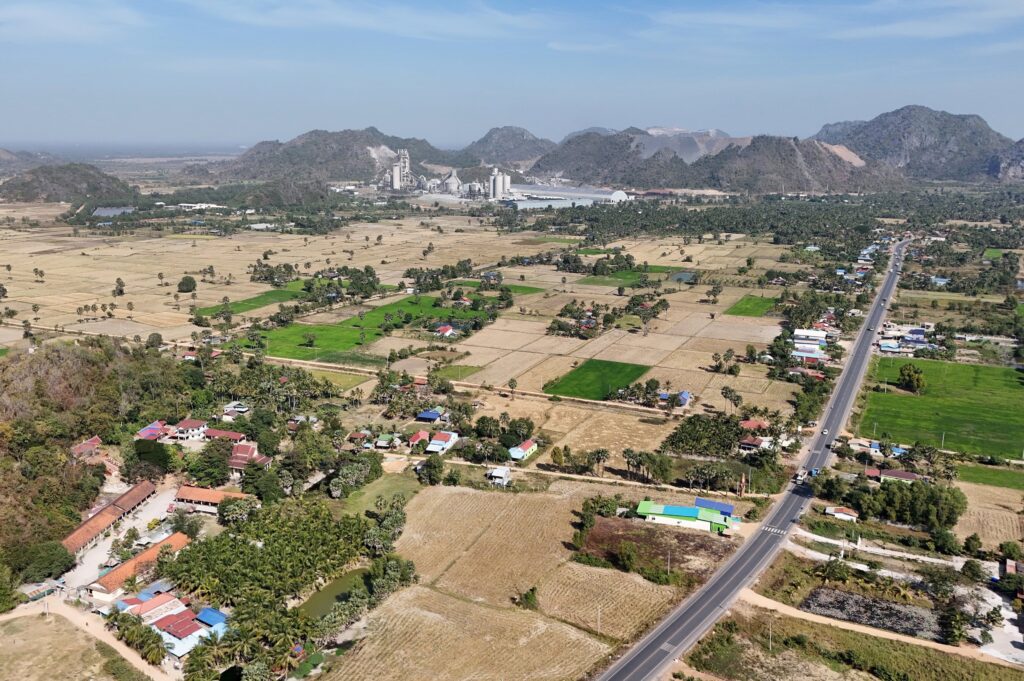
For each tonne of waste burned, Tontoton generates a thousand credits sold to customers around the world to ‘cancel out’ their own plastics pollution. Its clients include the accountants Ernst & Young and Royal Caribbean, the world’s second-biggest cruise ship operator.
Tontoton says it created “the world’s first plastic credit” in 2021, kickstarting a global trade. Now predicts plastic credits could generate $4.3 billion of revenue annually by 2050, according to research by BloombergNEF.
Critics say plastics offsetting simply hands big corporations a licence to pollute. An investigation by SourceMaterial and Agence France-Presse (AFP) found that the burgeoning credits market, which has no unified governing standards, does little to reduce the flow of waste in ecosystems and causes as many harmful emissions as burning hundreds of thousands of barrels of oil.
It’s a “lazy, lazy solution,” said Piotr Barczak, a specialist at the Acen Foundation, a sustainability consultancy.
‘Plastic neutral’
There are around 243 projects listed on plastic credit registries, across six continents, but most of them do not yet generate any credits. Those that do have sold them to clients including, in 2024, arms of Coca-Cola, PepsiCo and Colgate-Palmolive.
Ideally, the plastic those buyers pay to have collected would be recycled, helping to reduce the need to produce more. But SourceMaterial and AFP’s analysis of credits from four major plastic credit registries—accounting for over 125,000 tonnes of plastic waste, the weight of 12 Eiffel Towers—found that only around a quarter involved recycling.
Instead, the vast majority of plastic collected through offsetting initiatives—two thirds—is burned in cement kilns like the one in Cambodia, or in other waste-to-energy projects. In total, existing plastic credit schemes have burned or plan to burn 84,289 tonnes of plastic.
The analysis used a methodology developed at Emory University in Atlanta to estimate that this would emit around 237,000 tonnes of carbon dioxide, the equivalent of burning more than half a million barrels of oil.
Vincent Decap, co-founder of Zero Plastic Oceans, the registry that markets Tontoton’s credits, told SourceMaterial that recycling is profitable enough without credits and that his organisation focuses on plastic that can’t be recycled.
With so much non-recyclable waste already floating in the planet’s rivers and oceans, offsetting is the only viable solution, said Sebastian DiGrande, chief executive of PCX Markets, another registry.
“We have 9 billion tons of legacy plastic waste, the vast majority of which has been mismanaged,” he said. “In an ideal world, we would have none of these single-use plastics. We would have none of that legacy waste. Until then, what would you have us do with it otherwise?”
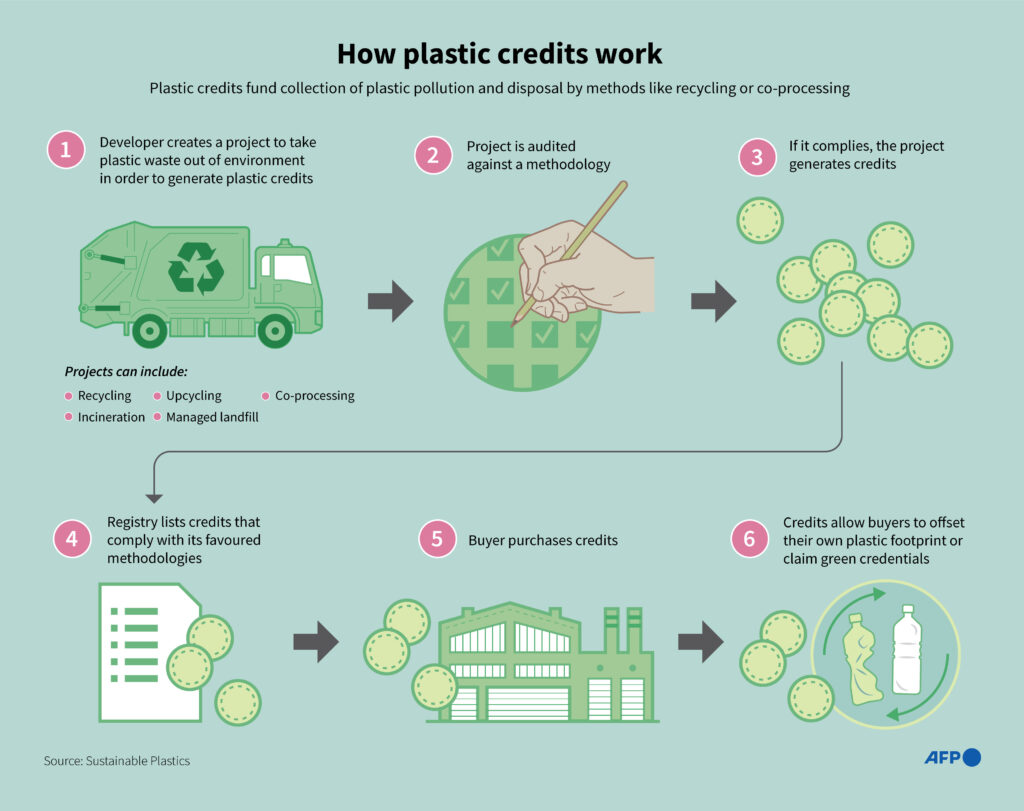
Yet none of the four exchanges analysed by SourceMaterial requires purchasers to show they are moving away from making hard-to-recycle products. That means that ultimately the schemes are doing little to reduce the amount of plastic being dumped—while what waste they do clear contributes to global warming when it’s burned, said Neil Tangri, a senior fellow at Berkeley Goldman School’s Center for Environmental Public Policy.
“There are no good end-of-life management options for most plastic waste,” he said. “We need to stop producing so much plastic, and particularly the most toxic and difficult to manage plastics.”
Widespread waste
In Cambodia, all kinds of bottles are burned—“shampoo bottles, water bottles”, said Vork, 39, a machine operator who works eight-hour shifts at the cement plant and like others interviewed for this story asked to be referred to only by his first name.
Most of those bottles are made of PET, a type of plastic that can be recycled.
Burning them in kilns not designed to filter out dangerous substances releases “a whole new cocktail of contaminants”, said Lee Bell, a policy advisor at the International Pollutants Elimination Network. Those include cancer-causing dioxins and so-called ‘forever chemicals’, or PFAS, which can lead to further serious health problems.
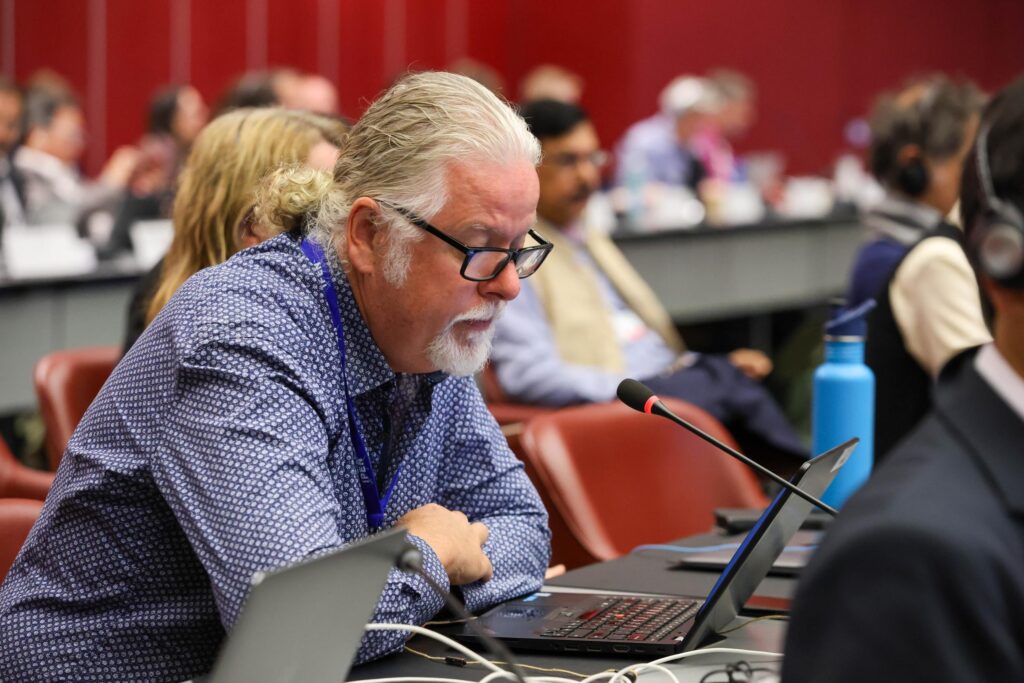
“You’ll get far more variety of toxic emissions from burning plastic than from burning coal because there are so many more toxic chemicals and additives in plastic to to start with,” said Veena Singla, a scientist at Columbia University.
Once these pollutants end up in the environment, they tend to stay there.
“Kids especially are touching everything,” said Miriam Rotkin-Ellman, an advisor to the Environmental Justice Health Alliance for Chemical Policy Reform. “They’re putting their hands in their mouths all the time. Dust is a huge hazard for what’s called hand-to-mouth. It gets into gardens, gets into ecosystems, moves up the food chain.”
“A lot of people get sick around here, especially children,” said Phirom, 37, who runs a sugar cane juice stand by the Cambodian plant wall. “They cough, it’s like they have the flu. It’s so dusty, all day and night.”
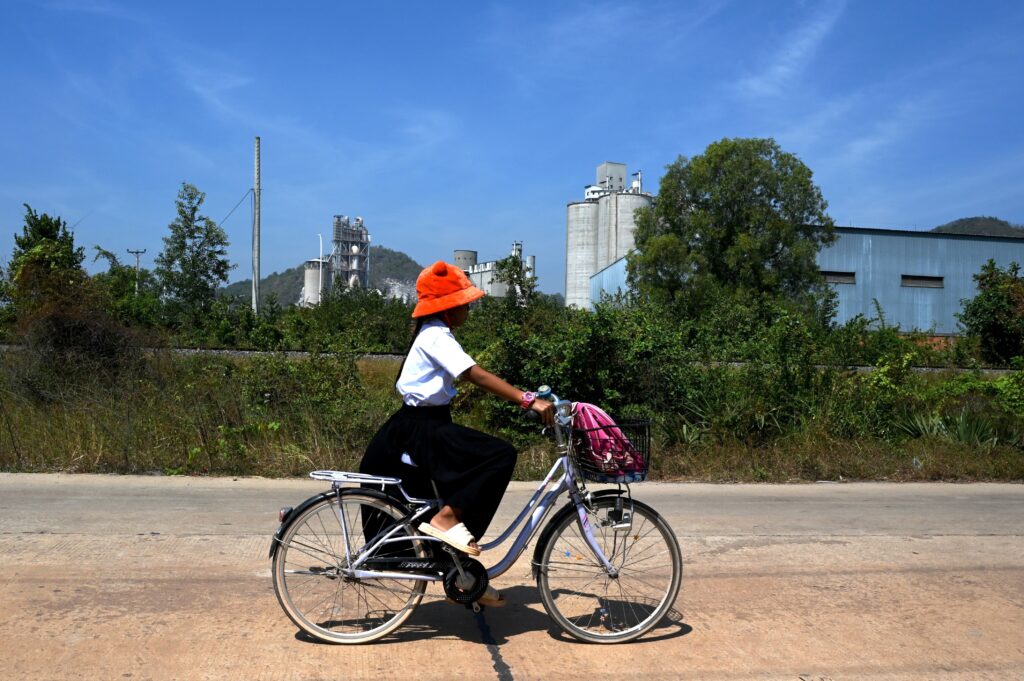
Kongthy, 56, who runs a food stand by the factory gates, said she has stopped collecting rainwater from her roof.
“My roof is all white so we don’t dare collect it,” she said. “We have to drink bottled water instead.”
She showed SourceMaterial and AFP medicines—painkillers, oral rehydration solution and antibiotics—handed out by Chip Mong Group every three months, but said she hadn’t received any instructions on how to use them.
Responding to questions from SourceMaterial, Decap of Zero Plastic Oceans, the marketer of the Cambodian credits, said the dust pollution is typical of all cement plants and not related to the use of plastics as fuel.
“We’re trying to do something better,” he said. “We’re not trying to do something perfect. If you try to do something perfect, you do nothing.”
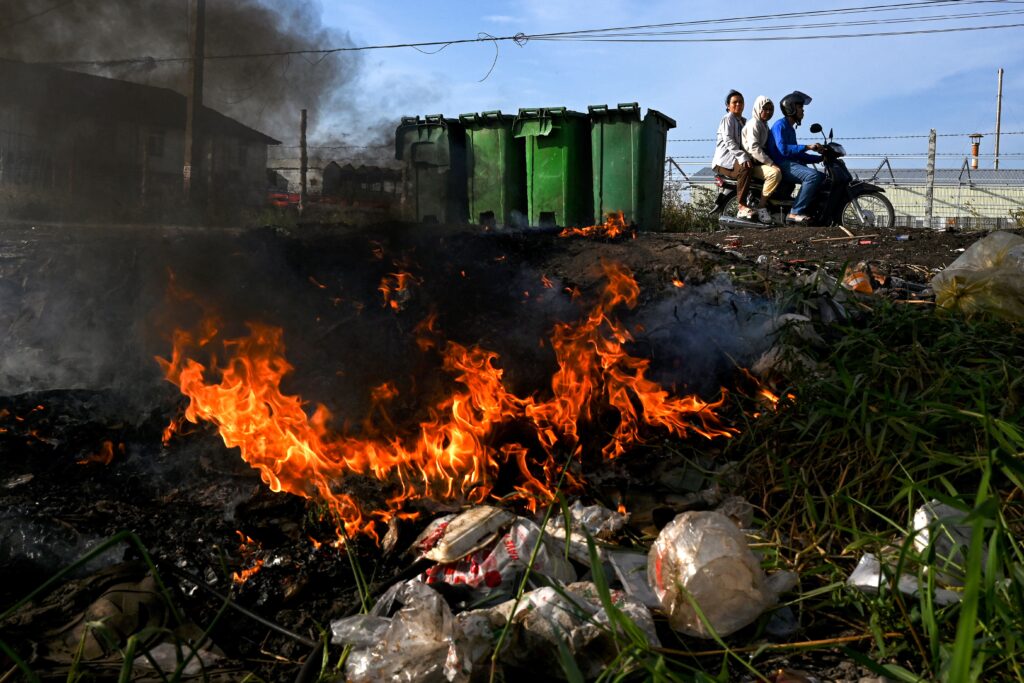
Open burning of plastic waste is banned in Cambodia, said a spokesperson for the country’s environment ministry. They said cement kilns were required to monitor air pollution and that the ministry “regularly checks all cement factories that use kilns to burn rubbish, solid waste and plastic waste”.
Tontoton declined to answer questions, while Chip Mong Group did not respond.
Global action
In December, the United Nations failed to reach a treaty agreement on regulating plastic pollution. Some negotiators accused oil-rich countries that supply raw materials for plastics of obstructing measures to cut plastic production.
As talks move towards a final session this year, there is an “increasing prominence given to plastics credits”, said Patrick O’Hare, an anthropologist at the University of St Andrews.
One reason for the increased focus on offsetting is backing from the World Bank, which has issued a $100 million “plastic waste reduction linked bond” linked to two projects, in Ghana and Indonesia.
But with global plastic waste set to almost triple to 1.2 billion tonnes by 2060, even some manufacturers are now doubtful that offsetting can be part of the solution.
Nestlé, which had previously bought plastic credits, said last year that it does not “believe in” their “effectiveness”.
“What we really need to do is not have so much plastic waste,” said Singla, the Columbia scientist. “That’s the root solution.”
Headline picture: A cement kiln operated by Chip Mong Group in Kampot Province, Cambodia (AFP/TANG CHHIN Sothy)
